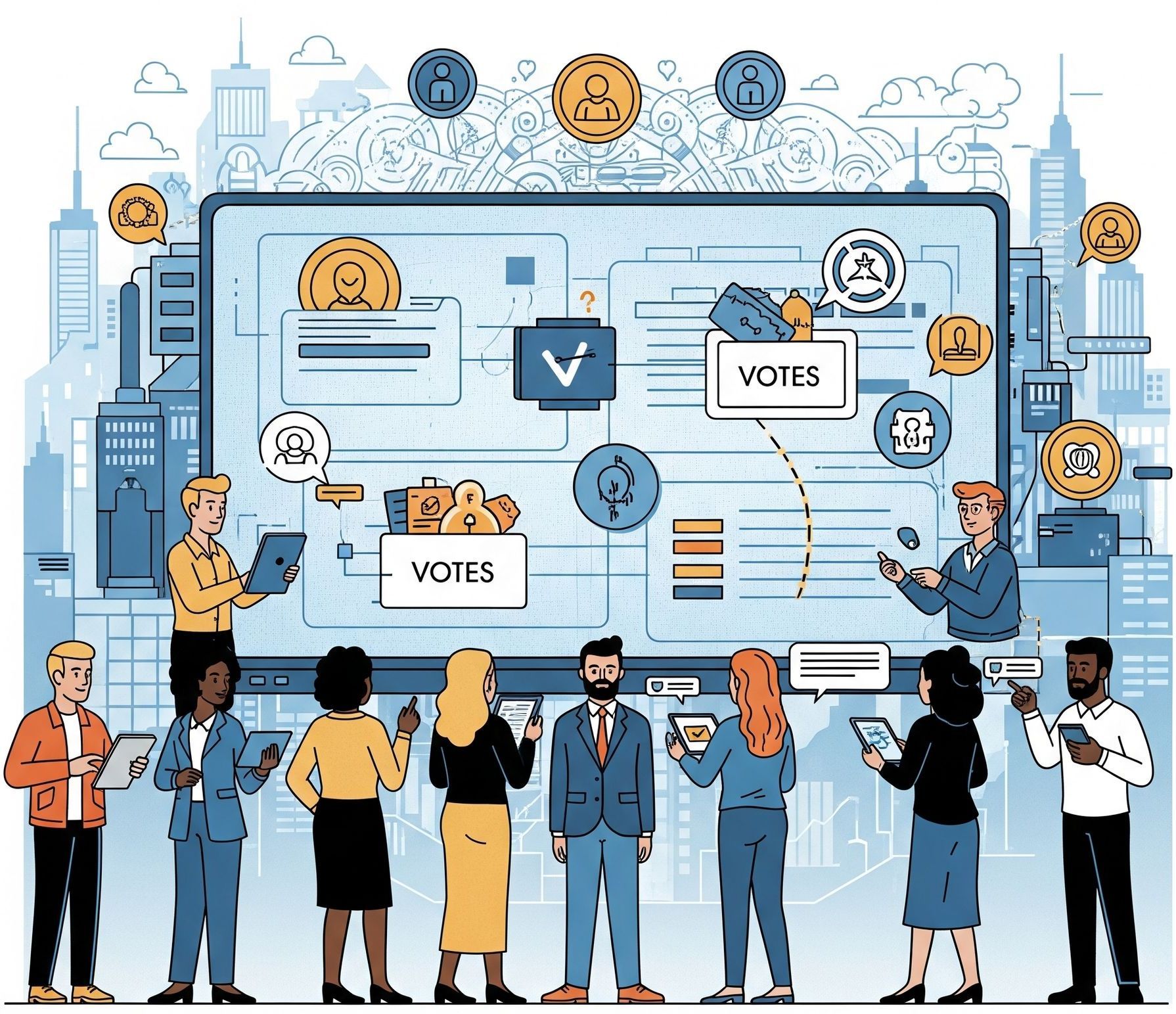The Top 10 Disconnects in Responsible Investing
While the concept of "sustainable development" was first introduced in the 1970s and more clearly defined in the 1980s, it really gained momentum over the past two decades with the successive economic and ecological crises. It has now taken the investment community by storm, and successfully carved out a place of choice in investors' mind, on boards’ agenda, and at corporate strategic forums.
Asset owners, asset managers, investment research teams, regulators, and citizens are all participating in reshaping the financial industry, by redefining its purpose and its expected contribution to our evolving societies. While many have been drawn into the discussion, willfully or not, polarization seems to have reached paroxysm. While these diverging views may appear irreconcilable, increasing transparency and mutual learning will bring us closer to each other, and faster than we think.

Asset owners, asset managers, investment research teams, regulators, and citizens are all participating in reshaping the financial industry, by redefining its purpose and its expected contribution to our evolving societies. While many have been drawn into the discussion, willfully or not, polarization seems to have reached paroxysm. While these diverging views may appear irreconcilable, increasing transparency and mutual learning will bring us closer to each other, and faster than we think.
1. Disconnect between how sustainability is perceived and what it really stands for:
What does sustainability mean for an organization? Many define it as a distinct initiative, most of the time directed by the communication department. As such, a sustainability strategy requires resources and does not produce much. Over time, it will likely grow out of control in terms of cost and out of sync with your mission, which will eventually be bad for your business and bad for your reputation, as the disconnect between your communication and action will become more apparent.
A sustainability strategy seen as a communication project is, therefore, not sustainable, and like any project, will be cut in bad times. A sustainable business strategy, on the other hand, is what all organizations should aim for: a strategy that can survive challenging times and thrive in good times, and that will surely create value in the long run, not only for its owners but also its employees and all rightsholders touched by an organization. A sustainable business strategy is a mindset, and a mindset will weather the test of time. To discern one from another, one single question should be asked: where do the “sustainability” meetings take place and who is attending? In a meeting room in the marketing department? Or do they convene a cross-functional team on the executive floor?
2. Disconnect between long-term ambition and short-term action:
We all thrive for a long-term investment horizon: it does sound great for an asset manager marketing campaign, appealing to institutional investors, and reassuring for retail investors. Unfortunately, time is a luxury good only a few asset managers and companies can afford. Getting out of the quarterly earning trap is not easy, for either companies or investors, and the price to pay for “short-termism” is high: from massive losses for shareholders and employees to loss of trust in capital markets and its participants. An increasing number of companies are avoiding public markets, which combined with successive waves of mergers and acquisitions, many times ill-advised and value destructing have resulted in a shrinking investment opportunity universe. In the U.S., the number of companies listed in stock exchanges has been halved in the past two decades and new listings are fewer and fewer. Sustainability could become a northern star, allowing us to look far ahead and not get lost along the way.
3. Disconnect between issuers and investors:
A good start to bridge the gap between issuers and investors would be to convey all participants in a single meeting: Corporate secretary, investor relation, sustainability professional on one side, and portfolio manager, ESG analyst, proxy voting specialist on the other side. A few tips for investors: Do your homework and identify what you want to know, what information you really need to improve your investment decision process; develop a framework for engaging with companies - who to engage with and on what topic: you will save your and the company’s time; monitor the impact of your engagement (board’s response and actual action): it will help increase your level of conviction in your decision to own or divest a position. A few tips for issuers: understand what existing or prospective shareholders want, how to best deliver that information, and educate them on what is material for the company; take this opportunity to explain your mission and vision, your approach to executive compensation, governance practices, environmental or social matters. This will reduce the risk of shareholders making investment/divestment decisions on wrong or outdated information, minimize the risk and associated costs - financial and executive time - of activism, and increase the odds of developing a long-term relationship with shareholders. Seek help and partner with consulting firms that truly understand both sides of the market.
4. Disconnect between reality and perception within an asset manager - Investors:
You may see embarking on a responsible investing journey as a daunting task but chances are that: 1) there is already a deep awareness and passion about responsible investing inside your organization; look beyond portfolio managers and analysts, there might be an opportunity for someone in the “lower ranks” to be promoted and join your ESG initiatives: you would be surprised by the hidden talent inside your organization; 2) you already do a lot, albeit not in a formal way; if your investment teams are using different metrics and approaches to ESG all the better! While it is quite difficult to convince a portfolio manager to change any part of his or her investment process, it is doable with the right incentives, and by combining knowledge and cross-fertilizing teams, you will save a tremendous amount of time and efforts and move way faster than you think.
5. Disconnect between reality and perception within an organization - Issuers:
Good news! Most of the sustainability data you and investors are looking for is already somewhere in your organization and, similar to asset managers, you are probably already integrating “sustainability” thinking, albeit to various degrees, into your capital allocation decisions or operational decisions (asset acquisition, mine design, staff training, etc.). The idea here is to formalize the collecting, centralizing, analysis, monitoring and reporting process which will allow your organization to make more informed decisions. Software solutions are now available that are easy to deploy and will greatly simplify your journey. Start small and add items and regions as you go: You may see your business from an entirely new perspective.
6. Disconnect between asset owners and asset managers:
Asset owners need to step up the pace in terms of ESG knowledge, and keep up on responsible investment best practices, not only domestically but also globally. Due diligence frameworks have evolved but asset owners should push for more transparency: adding just a few items on a due diligence questionnaire is not enough. New benchmarking templates should be developed in order to perform a more holistic analysis of external managers. Asset managers, on their end, need to start monitoring and reporting: by monitoring, you will develop a new lens for a better understanding of individual stocks and, more importantly, of portfolio-level exposure to sustainability risks. By reporting, you will be pushed to be more diligent and, over time, be able to add/remove items based on materiality, your investment philosophy and what is important for your client. Since the launch of the Montreal Carbon Pledge in September 2014, over 120 investors totaling more than $10 trillion in assets under management have promised to measure, disclose and reduce their portfolio carbon footprints. Now is the time for asset managers to deliver, both in terms of transparency and action.
7. Disconnect between reality and knowledge among issuers:
A key part of sustainability is about climate change. While we continue to struggle with our understanding of all the consequences of climate change, it is today difficult to ignore. Most organizations have set targets on key metrics, such as GHG emissions or water usage, but these targets may soon prove way too conservative. We need to quickly move to science-based targets and develop scenarios and goals that are adaptable to an evolving reality. The pledge made by 197 countries in Paris back in 2015 to limit global warming by 2 degrees is now seen as inadequate to prevent a significant impact on global economic growth. Keep learning, keep sharing, and keep stress-testing your business for changing conditions.
8. Disconnect between financial planner/advisors and their clients/prospects:
Responsible investing is a great opportunity to renew dialogue and bridge the relationship gap between you, your long-time clients and most importantly their children who have likely been neglected along the way. A massive transfer of wealth between generations will soon occur, and responsible investing is a great way to bring this new generation of investors into the conversation. Long-time clients may not care about sustainability, and this partly explains why so many financial advisors assert “there is no demand for these products”, but their children and grandchildren may think otherwise. This is the time to listen and find out by yourself. You do not necessarily need “ESG” products, but you need to know how to articulate an investment approach to sustainability: learn new vocabulary, new stories and how you can offer even more value to your clients.
9. Disconnect between the top, middle and bottom within an asset manager:
As a sustainability champion, be it on the issuer or investor side, you are likely facing a lack of support and resources at best, and impediments and undermining at worse. Ironically, in either case, demands on your small, albeit motivated team keeps expanding. At some point, you may have to assess your chances of making a difference inside your organization: Is your CIO on board? Can you gain support from your CEO or the board of directors? Can you get fellow portfolio managers and analysts to pool knowledge and resources in order to make a big push? Can you count on sales and marketing teams? If you don't see any support coming your way, life is too short and there is a scarcity of ESG/investment professionals like you. Maybe it is time for you to move on.
10. Disconnect between issuers and regulators:
Global trend, local pain. New policies are currently being crafted and everyone’s contribution is of great value. This is the time to be heard and influence future regulation. Pressure to shift business models, mitigate current sustainability impact or just expand reporting effort might sound easy for large cash-rich companies, but could represent a significant burden for smaller sized or not for profit organizations. Moreover, economic and employment structures vary widely from one region to another. In Vietnam, about 40% of the workforce is involved in the primary sector versus 10% in Chile and 2% in Canada. Each country should allow for a “transition” policy that takes into account its own characteristics and dynamics. Policymakers are continuously looking for the right balance between the need for more transparency and the burden to provide it, especially for publicly listed companies that are increasingly exhibiting signs of reporting reform fatigue.
A mix of industry-led initiatives and commitments, policy-driven requirements, and partnerships between for profit and not for profit organizations, will likely prove the best way forward to a sustainable and responsible finance.
______________________________
Avis de non-responsabilité
Les opinions exprimées dans cet article sont personnelles et ne reflètent pas nécessairement les vues ou positions de Borealis GAM. Les informations fournies sont à titre informatif uniquement et ne constituent pas des conseils financiers ou des recommandations d'investissement. L'auteure décline toute responsabilité pour les conséquences découlant de l'utilisation ou de l'interprétation des informations fournies dans cet article.







